Oystermouth Castle, Mumbles Village, Swansea Bay, Wales, UK, June 9, 2019
Photographs by Ing-On Vibulbhan-Watts

Oystermouth Castle (Welsh: Castell Ystum Llwynarth) is a Norman stone castle in Wales, overlooking Swansea Bay on the east side of the Gower Peninsula near the village of the Mumbles.
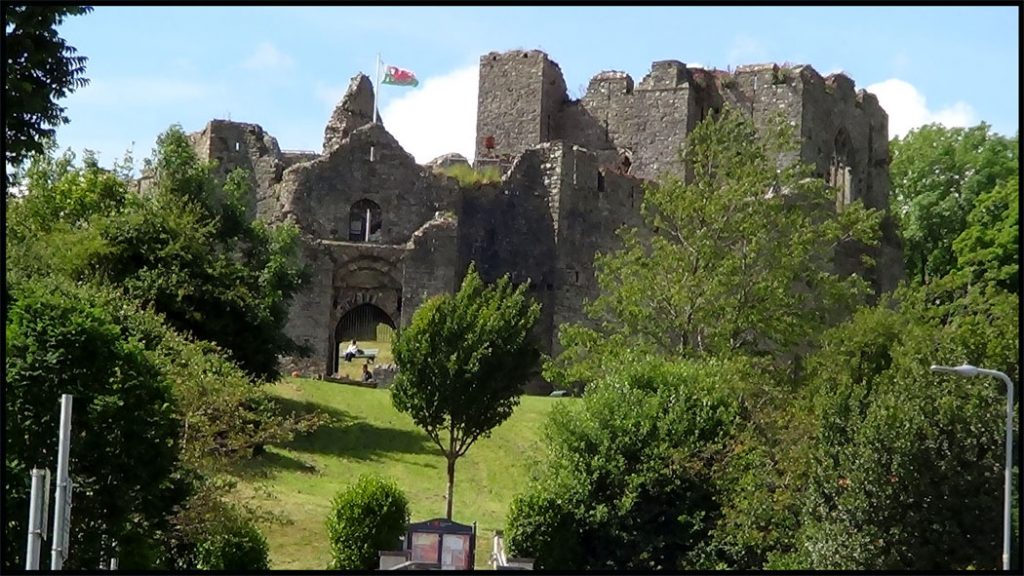
The early castle The first castle was founded by William de Londres of Ogmore Castle soon after 1106 following the capture of Gower by the Normans. In 1116 the Welsh of Deheubarth retook the Gower Peninsula and forced William to flee his castle which was put to the torch. The castle was rebuilt soon afterwards, but was probably destroyed again in 1137 when Gower was once more retaken by the princes of Deheubarth. The Londres or London family finally died out in 1215 when Gower was again taken by the Welsh under the leadership of Llywelyn the Great. In 1220 the Welsh were expelled from the peninsula and the government of Henry III of England returned the barony of Gower to John de Braose who rebuilt both Swansea Castle and Oystermouth.
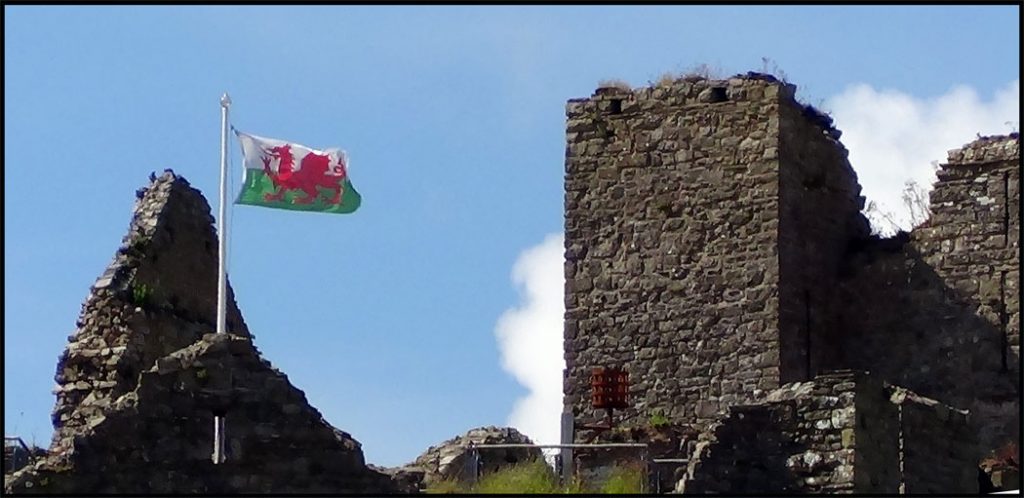
In the 13th century the Braose family were Lords of Gower and held the castle as part of their extensive land holdings and titles, including other castles on Gower and in the Welsh Marches. The de Braose dynasty could afford to rebuild Oystermouth castle in stone. A high curtain wall was built, internal buildings added, a chapel, basements,three storey residential buildings with fireplaces and garderobes on each floor. The castle had every residential feature necessary for living in some comfort and was also refortified cleverly. Towards the end of the century Oystermouth rather than Swansea Castle became their principal residence. Edward I paid a brief visit here in December 1284.
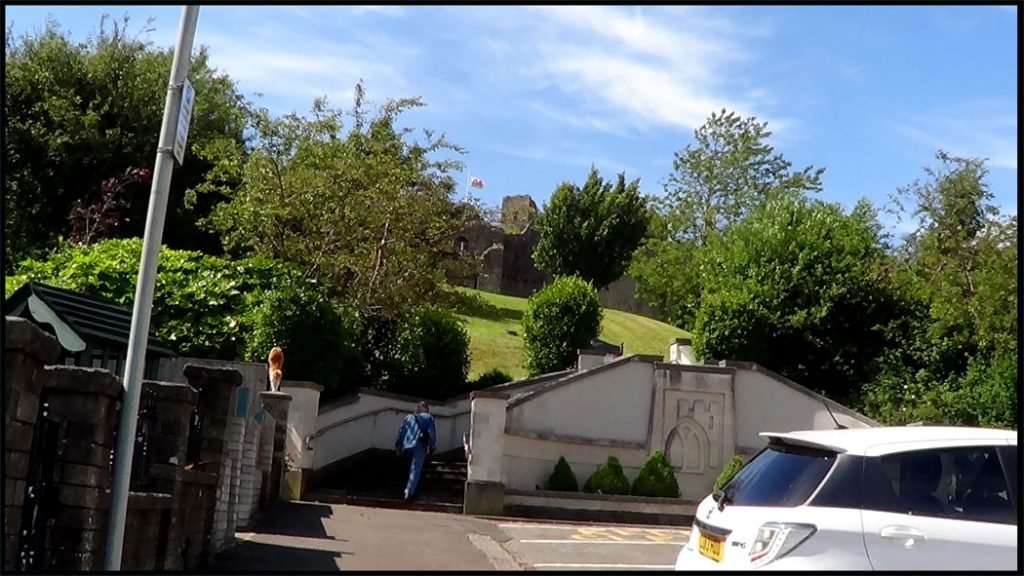
By 1331 the Lords of Gower were living elsewhere and the castle declined in importance in the 14th century.
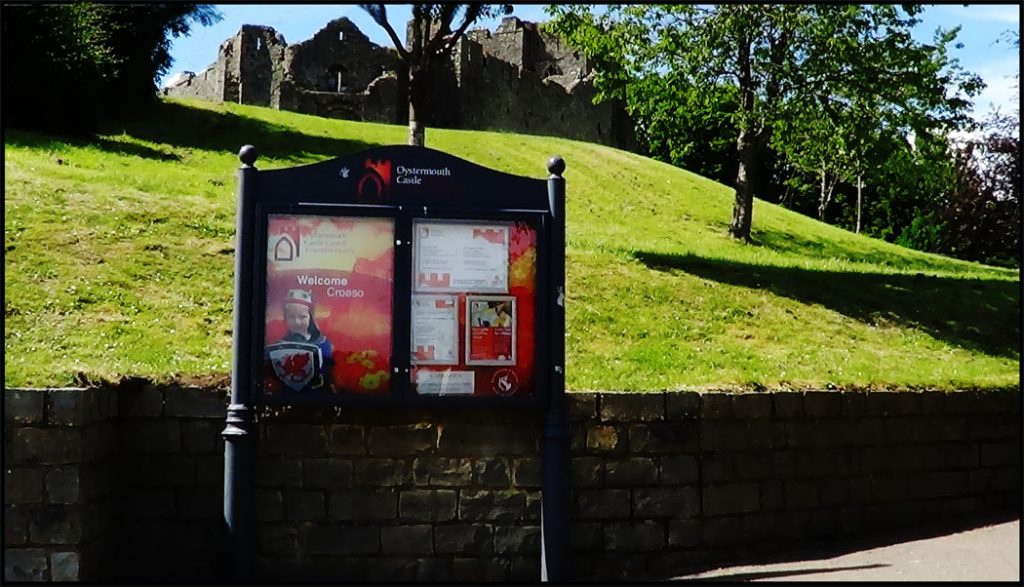
The daughter of the last de Breos Lord, Aline de Breos, who improved the chapel making it one of the finest in any castle in south Wales, later married John de Mowbray, and the Lordship of Gower including the castle at Oystermouth passed to the de Mowbrays through this marriage, and then to the Herbert family, and finally the Somersets, who became successive Marquis of Worcester and finally Dukes of Beaufort.
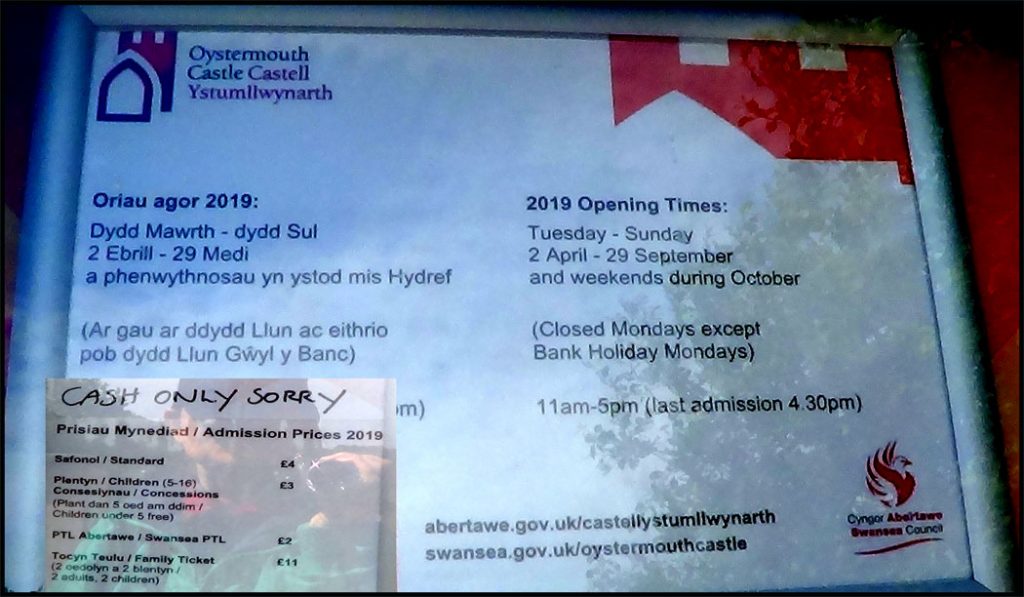
Decline and decay After the Middle Ages, the castle gradually fell into ruin. A survey of Gower made in 1650 describes Oystermouth Castle as [a]n old decayed castle of no use, but of a very pleasant situation. It was portrayed in art in the 18th century as a picturesque ruin, and was restored by George Grant Francis in the 1840s while the castle was owned by the then Duke of Beaufort. In 1927 the Duke of Beaufort gave the castle to Swansea Corporation; today, the castle is maintained under the responsibility of the City and County of Swansea council.
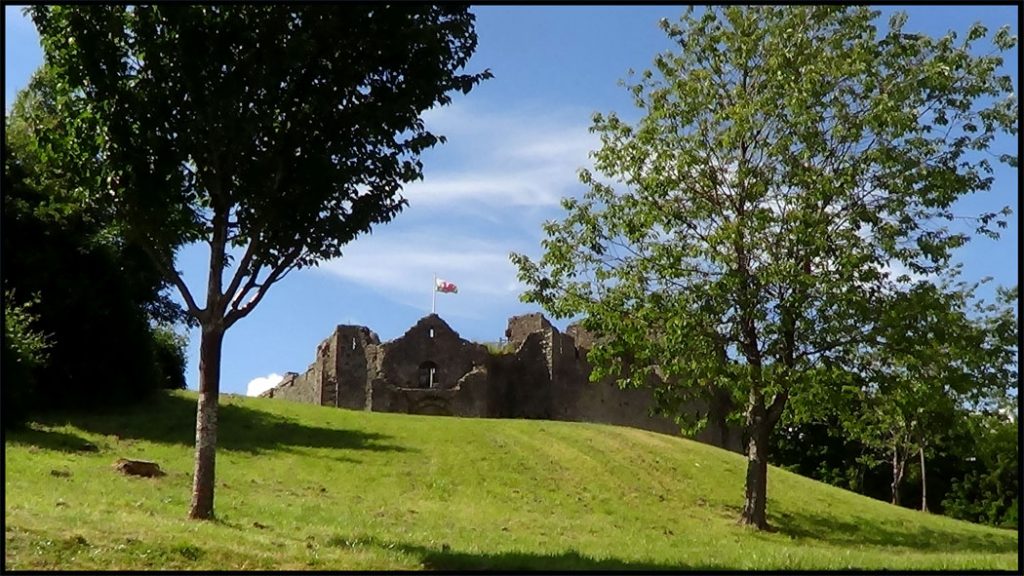
2000s restoration In 2009 the National Assembly for Wales announced it was investing £19 million in the country’s heritage sites in an attempt to boost tourism.[1] As part of the programme Oystermouth Castle closed in 2010 while it underwent a £1 m refurbishment; it reopened to the public in July the following year.[2] Following the first phase of conservation works Oystermouth Castle reopened to the public in mid July 2011. The scheme includes new visitor facilities, an educational space, improvements to access and a 30-foot high glass viewing platform and bridge that leads to Alina’s Chapel.
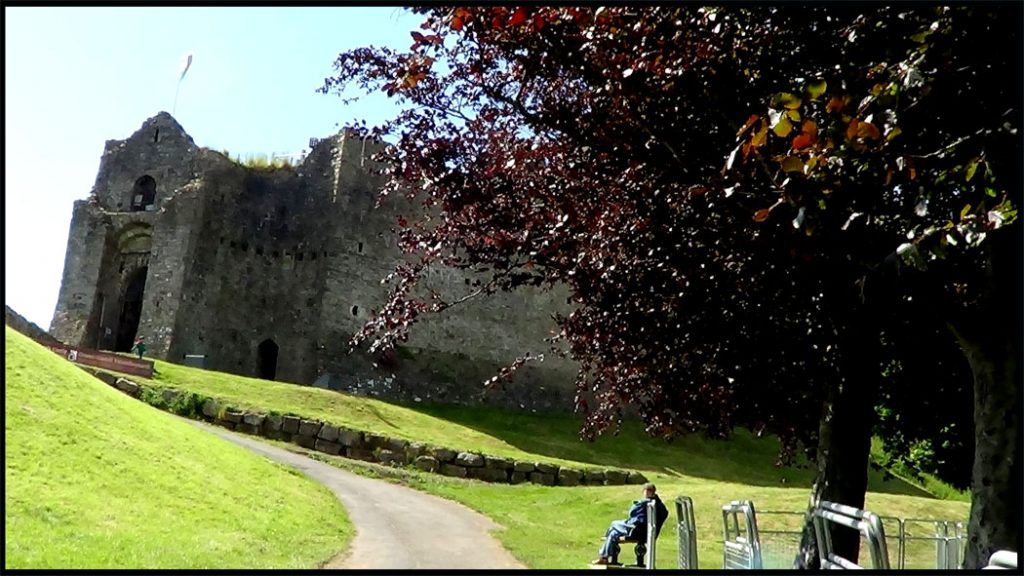
Notable features of the castle On either side of the entrance gate the walls curve inward, showing that at one time there were supposed to be two round towers built into the gatehouse. It is unknown whether these were ever built.
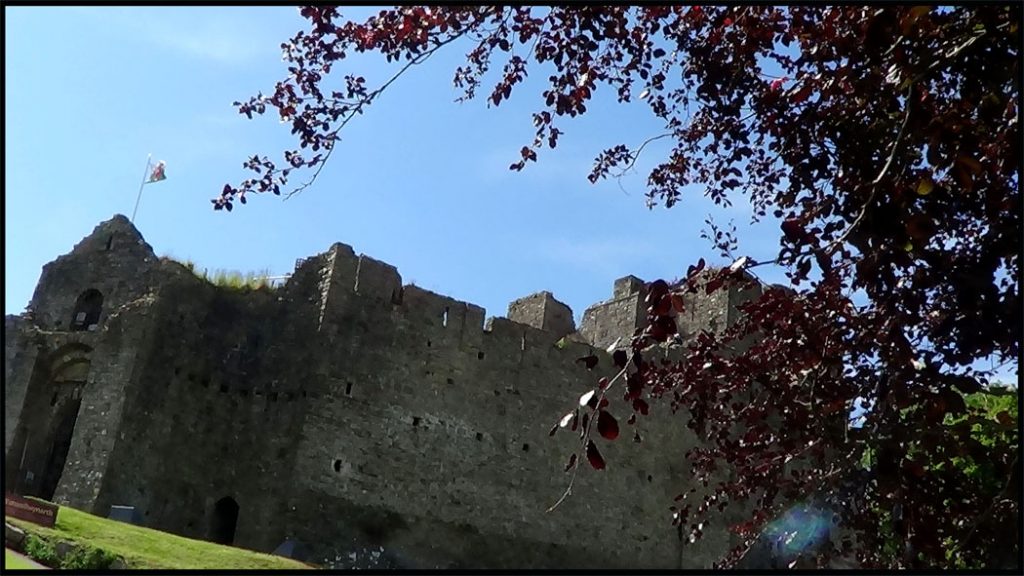
The chapel (on the second floor of the chapel block) has 14th century traceried windows. According to local tradition the chapel was built under the direction of Aline de Mowbray.
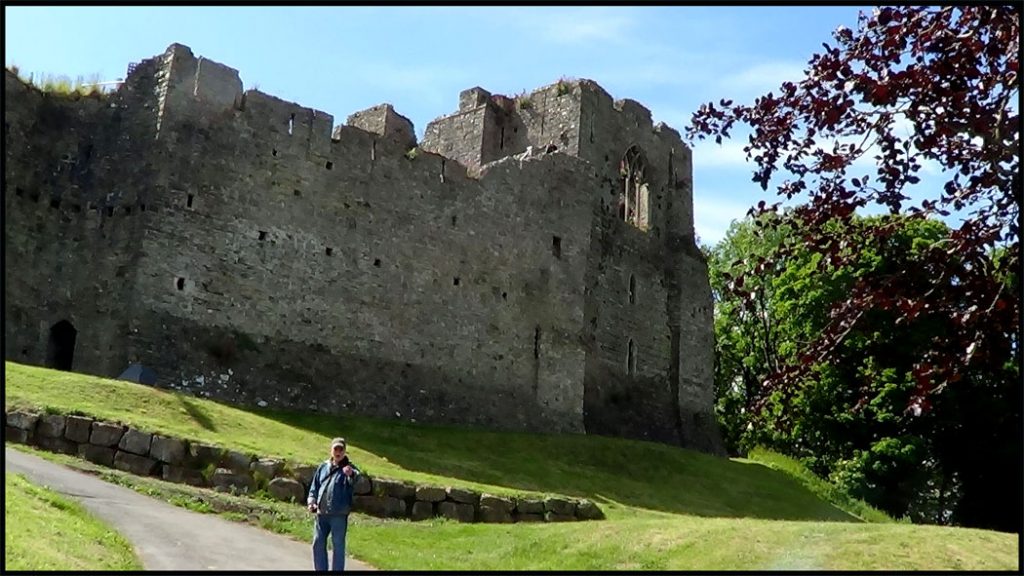
Remnants of an ornate medieval painting dating back to the 14th century have recently been found in the chapel. The surviving painting is thought to be over 700 years old and was spotted during conservation work in the historic attraction’s chapel area. Exposure to the elements has taken its toll on the painting over time but expert Cadw analysis suggests it’s a double-arched canopy that contains the figures of angels. Some of the clear elements of the painting that remain include a wing with multiple feathers and circular shapes that form a head with yellow hair surrounded by a nimbus. It’s thought the painting is both highly important and testimony to the original design of the chapel attributed to Alina de Breos in the early 14th century that once formed part of a larger work of art.
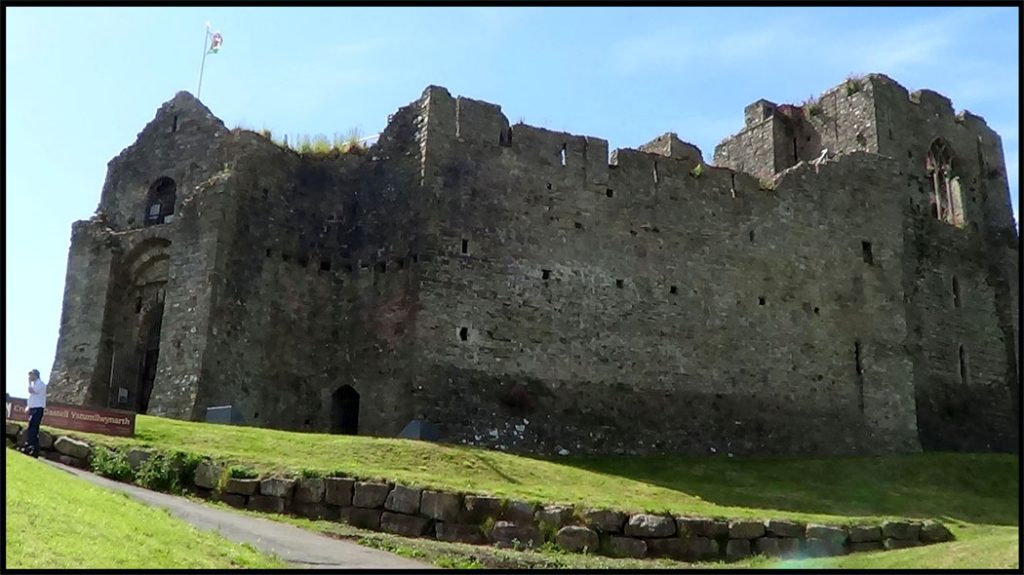
This is the Gower Peninsula’s finest castle, standing on a small hill with a magnificent view over Swansea Bay in the resort town of Mumbles. It is well-preserved, intricate and exciting to explore. Oystermouth Castle was founded by William de Londres of Ogmore Castle
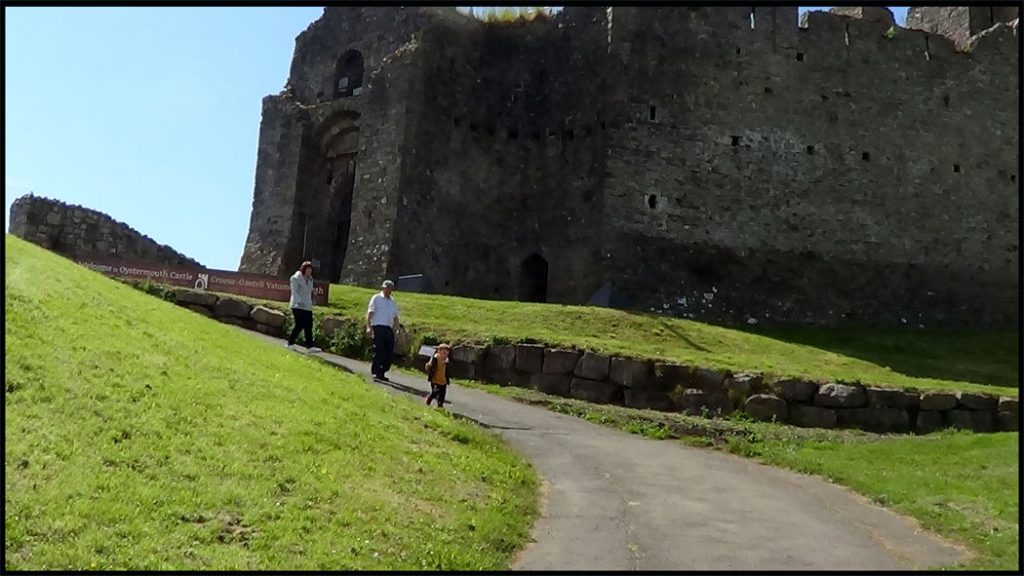
Ogmore Castle early in the 12th century. Of this first castle, which was probably a ringwork and bailey on the highest part of the hill, there is now no trace. The castle later came to be the chief residence of the lords of Gower, and its history became intimately connected with that of Swansea Castle.

The earliest stone building of the castle, the keep, dates from the 12th century. This is the building straight ahead of the entrance. It has been much altered and incorporated into a later block, of which it now forms the southern half. Originally it was a free-standing, rectangular building, entered through an arched doorway, now blocked to the right of the present entrance porch. The great hall would have been on the first floor. Twice the Welsh burnt this early castle, first in 1116 and later in 1215.
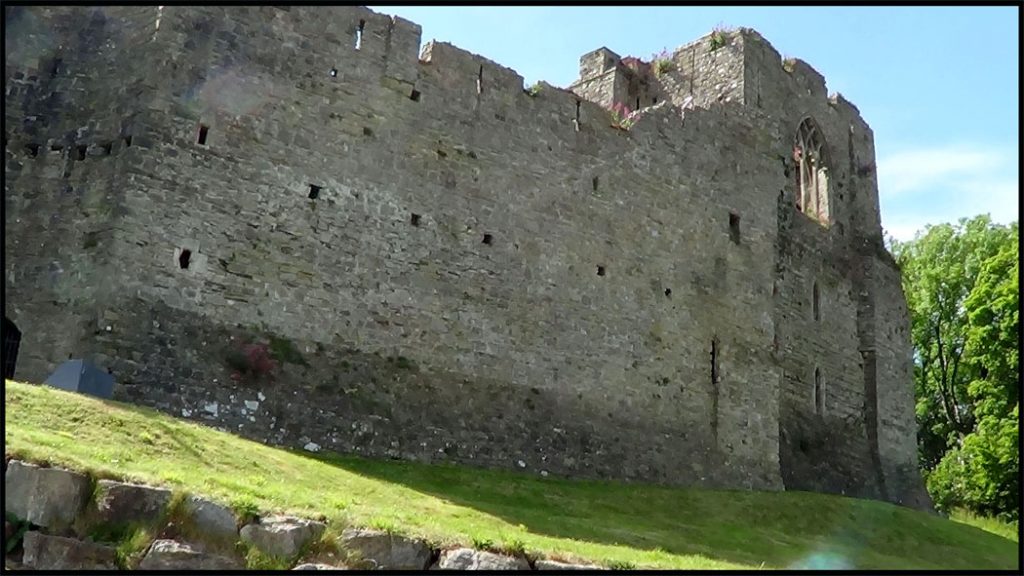
In the 13th century the de Braoses were lords of Gower and held the castle, and towards the end of the century Oystermouth rather than Swansea became their principal residence. Edward I paid a brief visit here in December 1284. The de Braoses rebuilt the castle in stone, and most of what remains today is from that period. On the east and west sides is a high and impressive curtain wall with a wall-walk along the top. At its north-east end this leads to a garderobe and then rises to a small tower from which the panoramic view is magnificent. This is a good place from which to appreciate the lovely south window of the chapel. On its north side the castle is enclosed by the outside walls of several residential blocks.
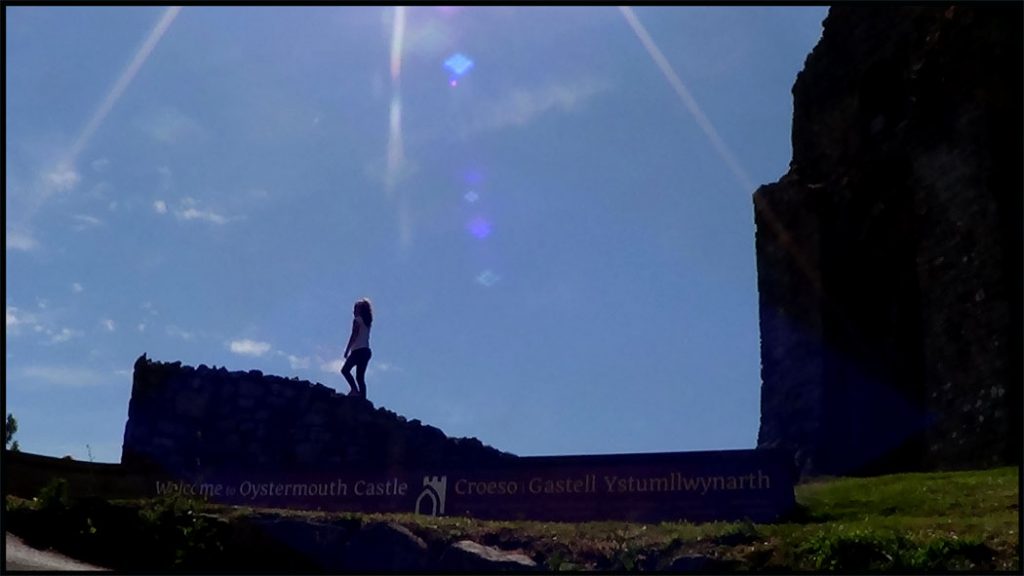
The castle entrance on the south side is an arched passage flanked by what were originally two half-round towers. These have had their fronts hacked off, and the remainder patched and tidied up. Inside the castle the southern part is an open courtyard, with remains of two long, rectangular buildings against the curtain walls on either side of the entrance. The rest of the castle buildings fill the northern end. Behind the keep is a rectangular room with small windows and a fireplace in the south wall. Above this was the lord’s private apartment, or solar, and below is a basement.
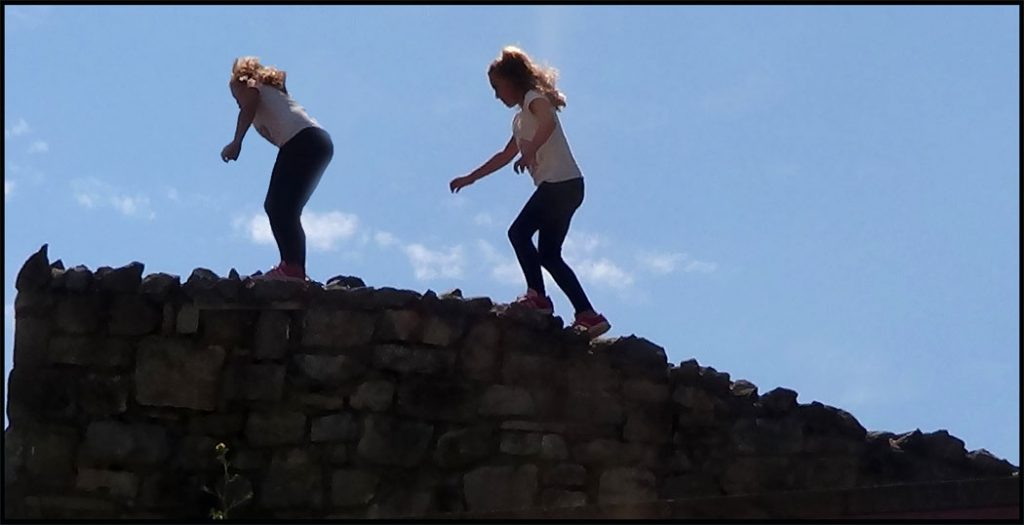
A narrow passage leads through the top floor of the north-west block, thought to be the earliest stone addition to the castle after the keep. It is a high, three storey block with a barrel-vaulted basement, and similar middle floor, now held up by a modern pillar. In the south-east corner there is a fascinating narrow passage, dimly lit by narrow slits, which leads back to the keep. It skirts round a spiral staircase which can be glimpsed through its slits. To the west of the keep is a small guardroom. The north end of the west range is a three-storey residential building with fireplaces and garderobes on each floor. To the south is a range with steps leading down to two barrel-vaulted basements and steps up to a large, once well-lit room, with the remains of a large fireplace in its west wall. Apparently the de Braoses lived in some comfort here.
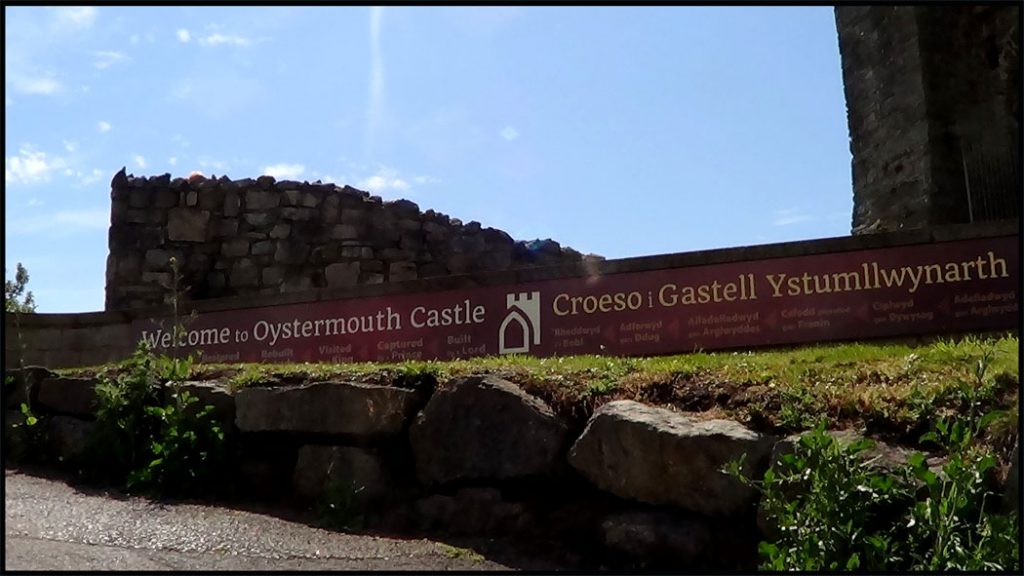
There remains the chapel block on the east side, architecturally the high point of the castle. It was added in the early 14th century, and is usually attributed to Lady Alenora de Mowbray, wife of lord John Mowbray who held the castle then. It blends in well with the rest of the castle, but its detail suggest a much greater level of refinement. On the ground floor are a large fireplace, narrow trefoil-headed splayed windows and a garderobe in the south-east corner. Above is a similar floor. But on the top floor was a large chapel, the great glory of which is its east window. This and the other chapel windows, retain their fine tracery, the finest of the period of any window in south-east Wales.
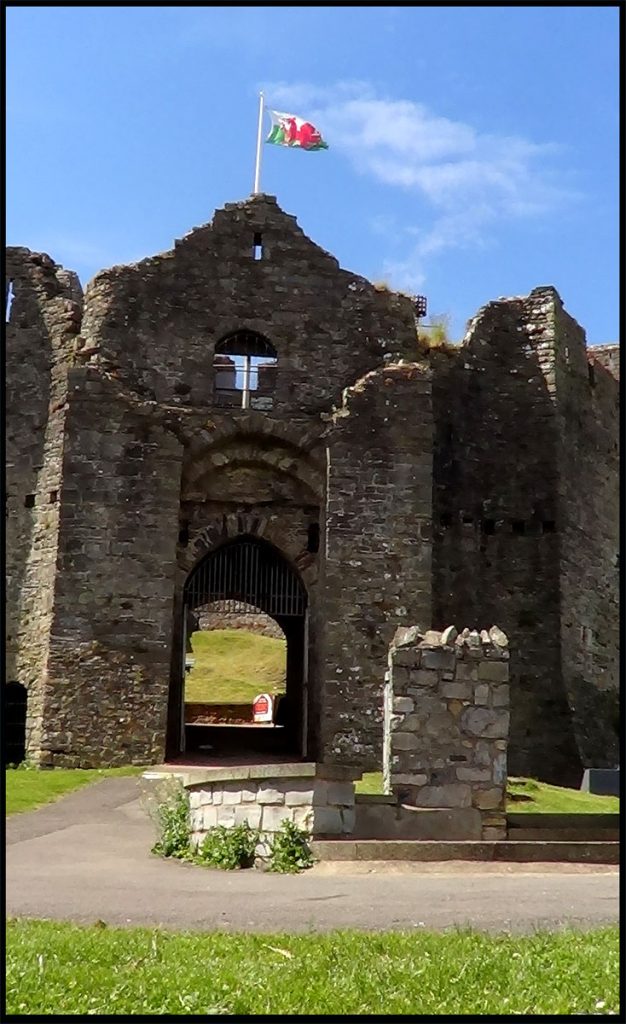
The chapel use was short-lived, for by 1331 the lords of Gower lived elsewhere. A gradual decline set in, and by the 16th century the castle was ruined. It still has the power to stir the imagination.
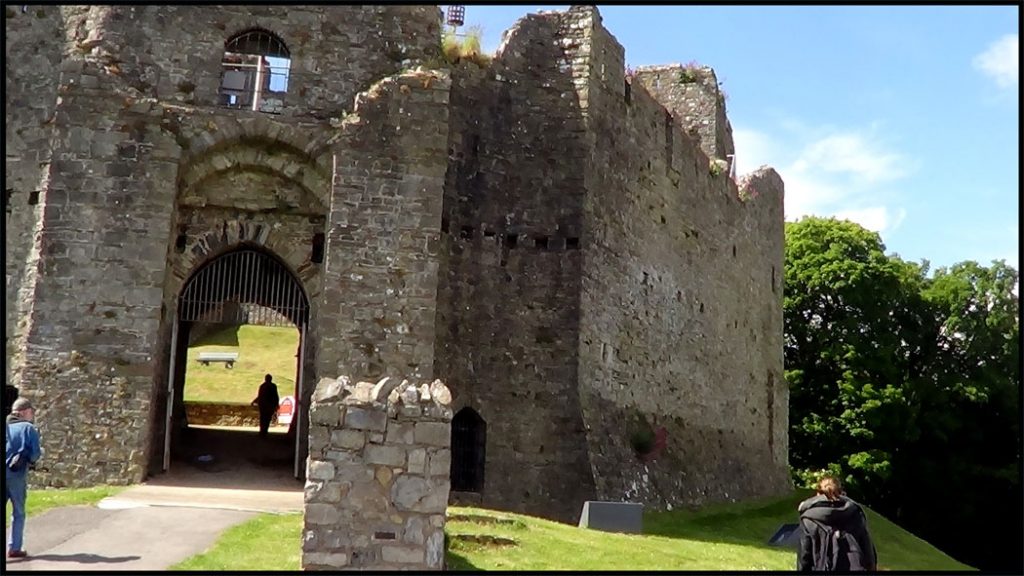
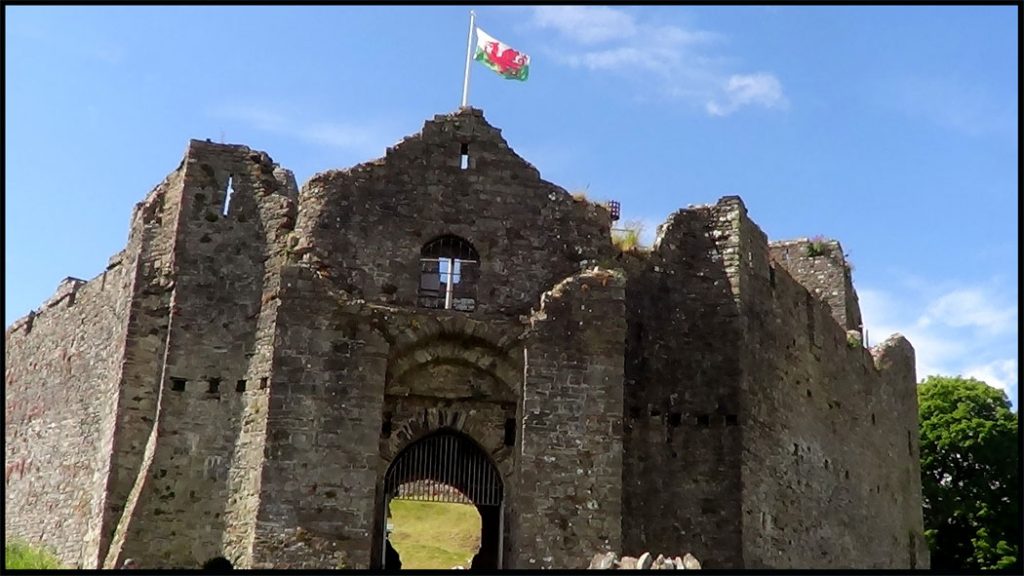
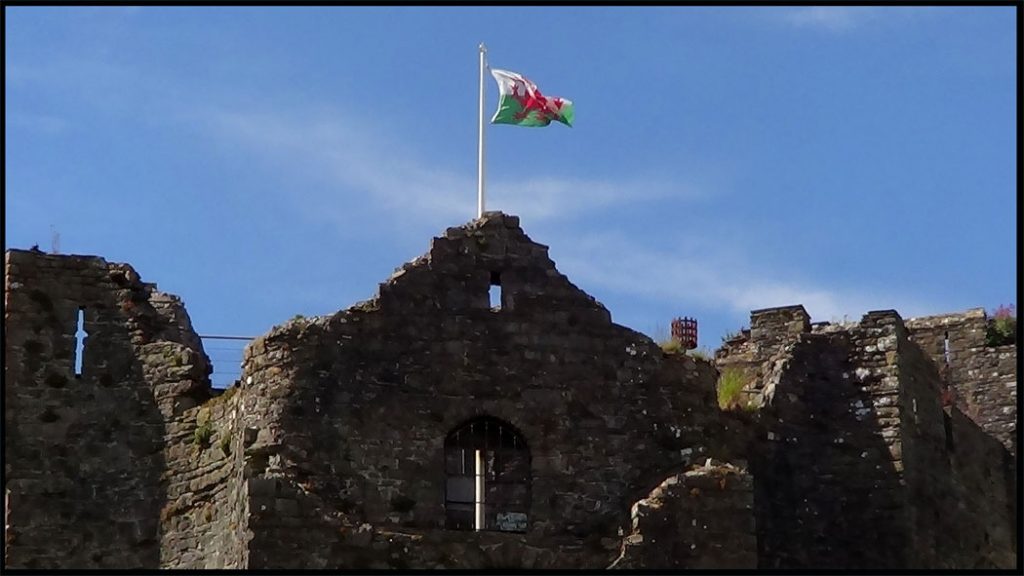
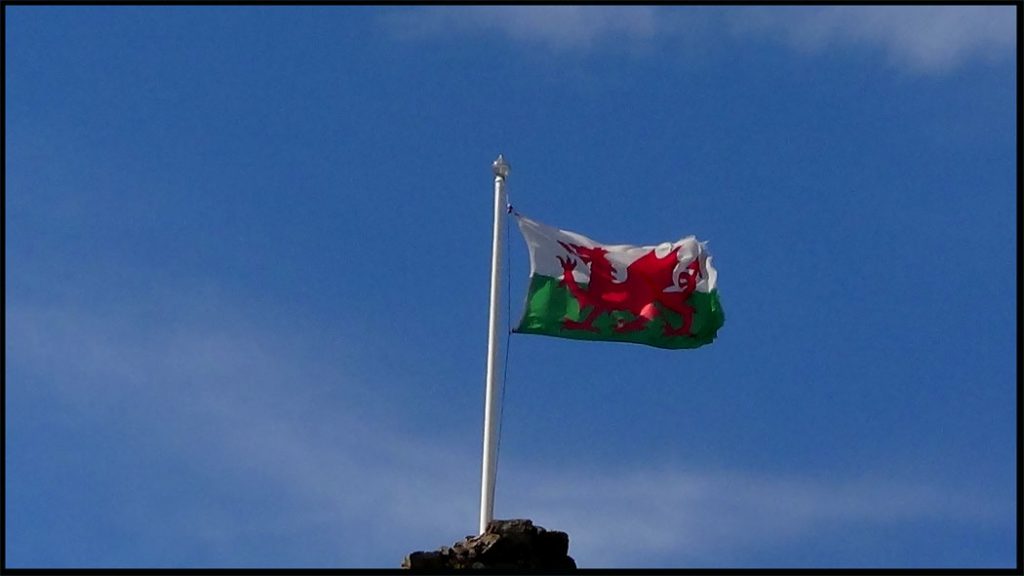
Welsh’ s Flag with red dragon as a symbol

Mumbles’ Village
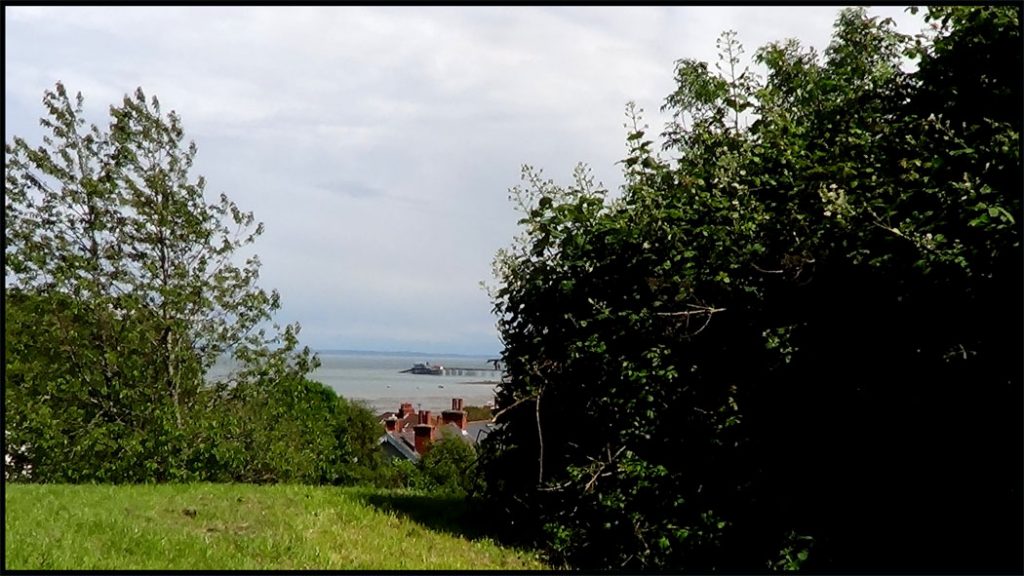
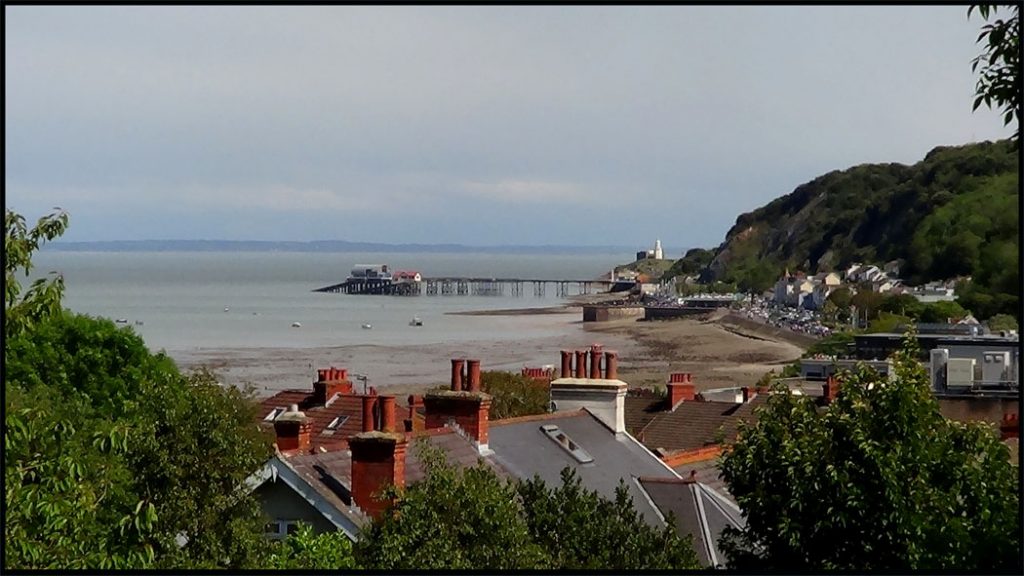
I stood on the hill of Oystermouth Castle and looked down to Swansea Bay, the pier extending onto the beach, where the light house stands tall by the edge of the bay.
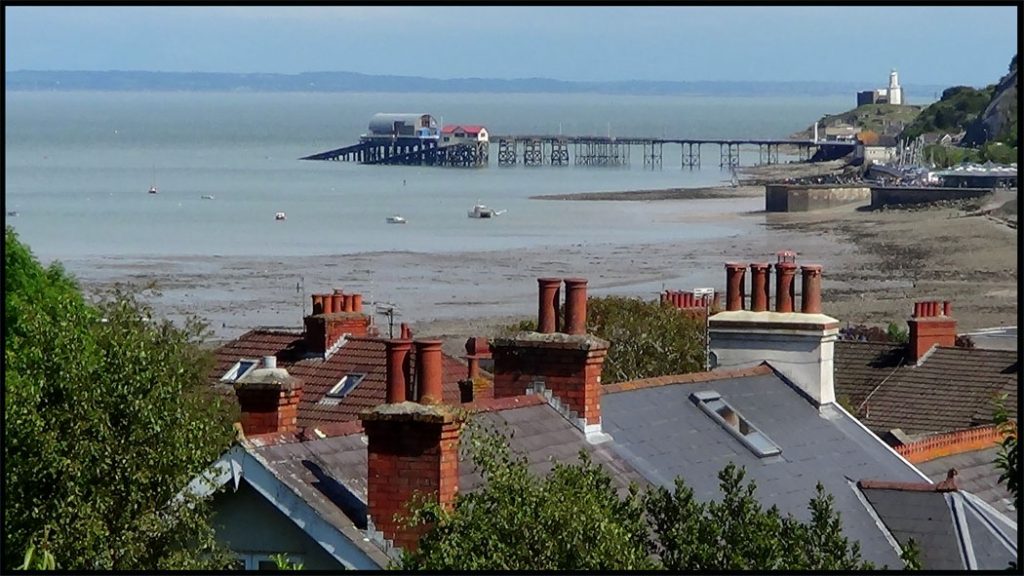
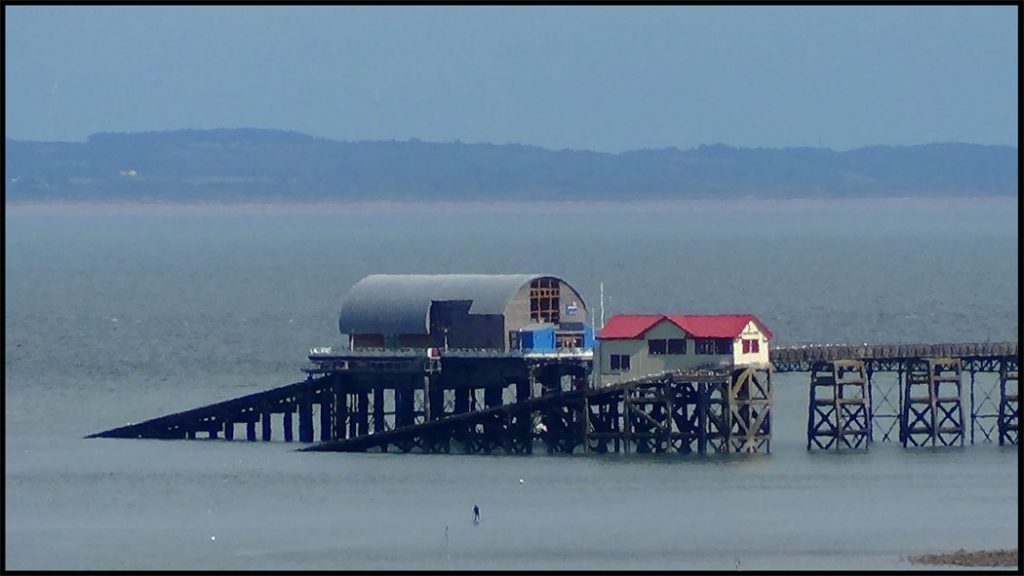

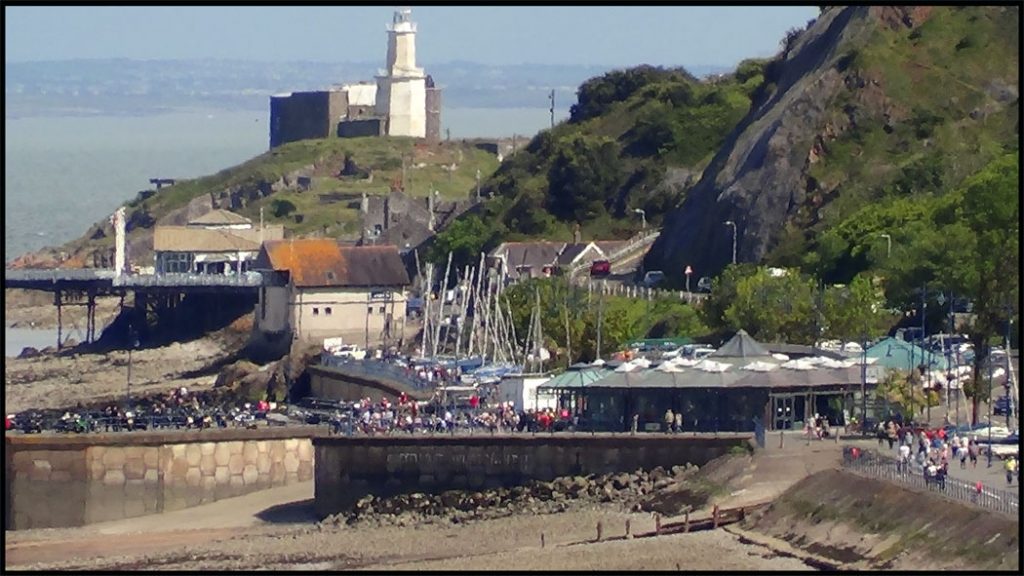
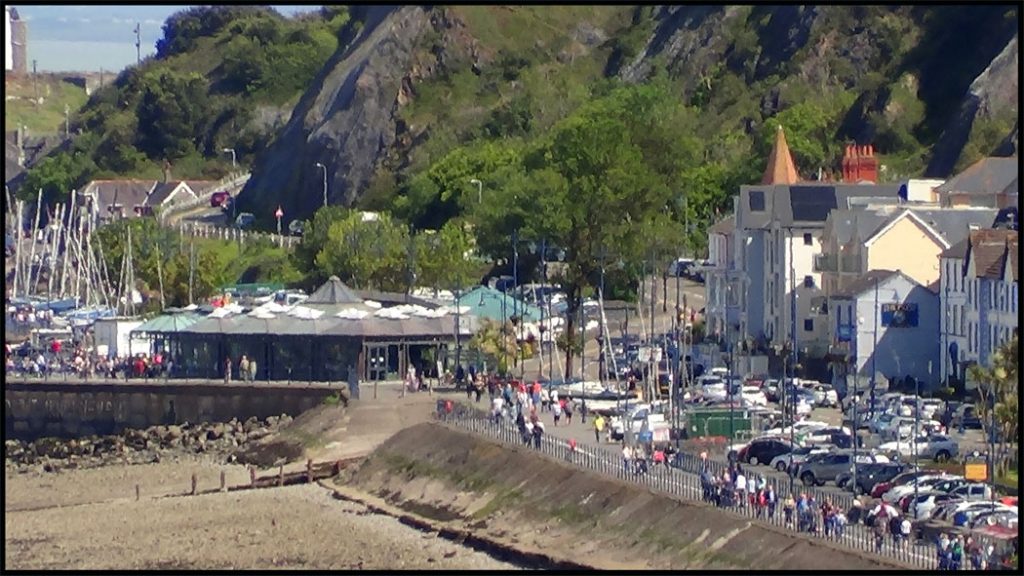
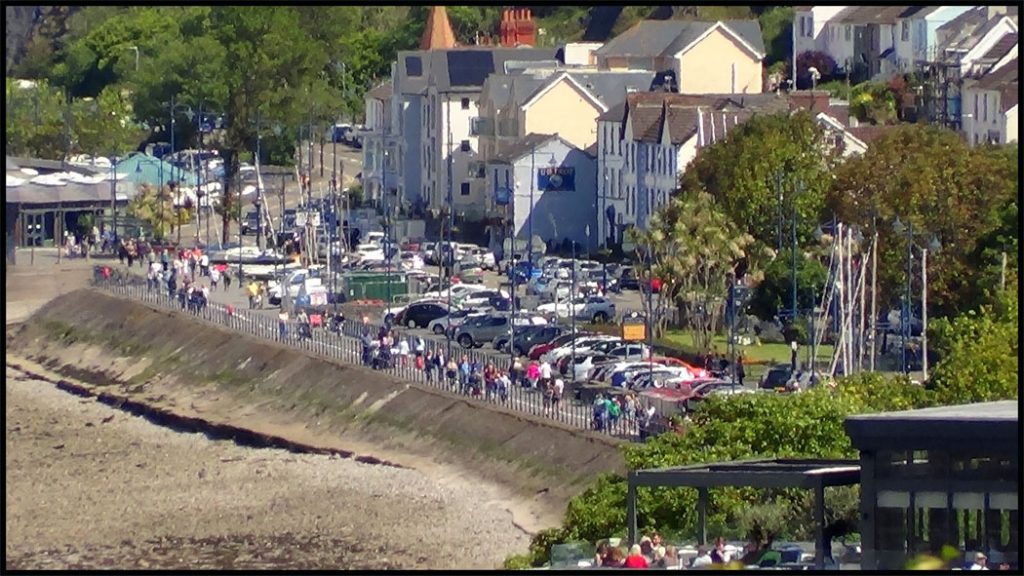


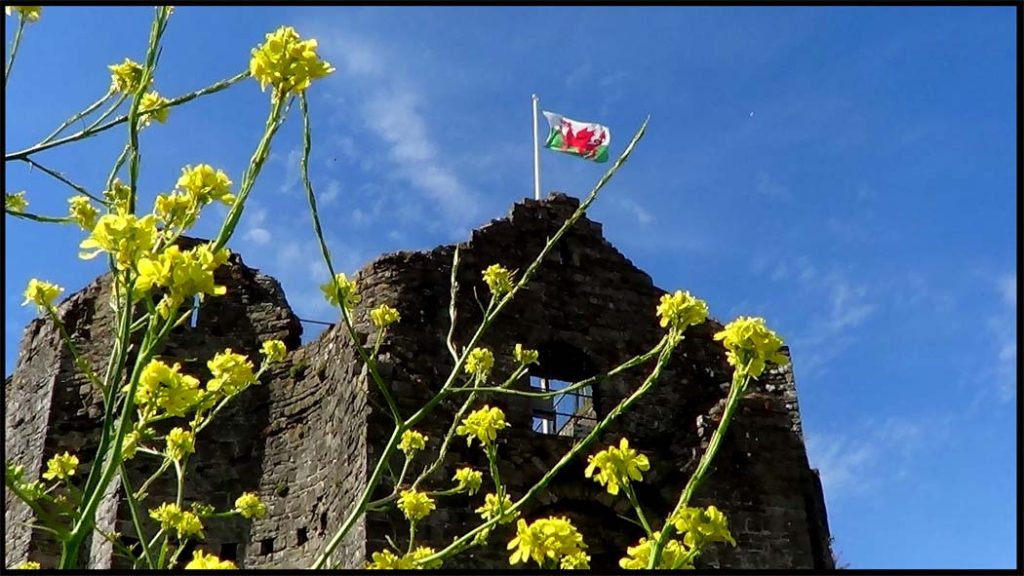
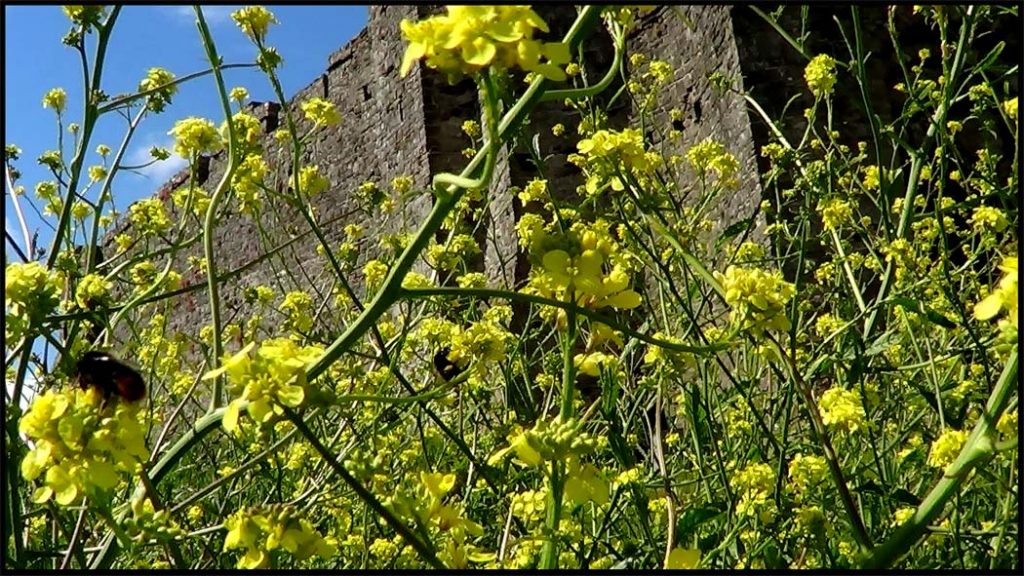
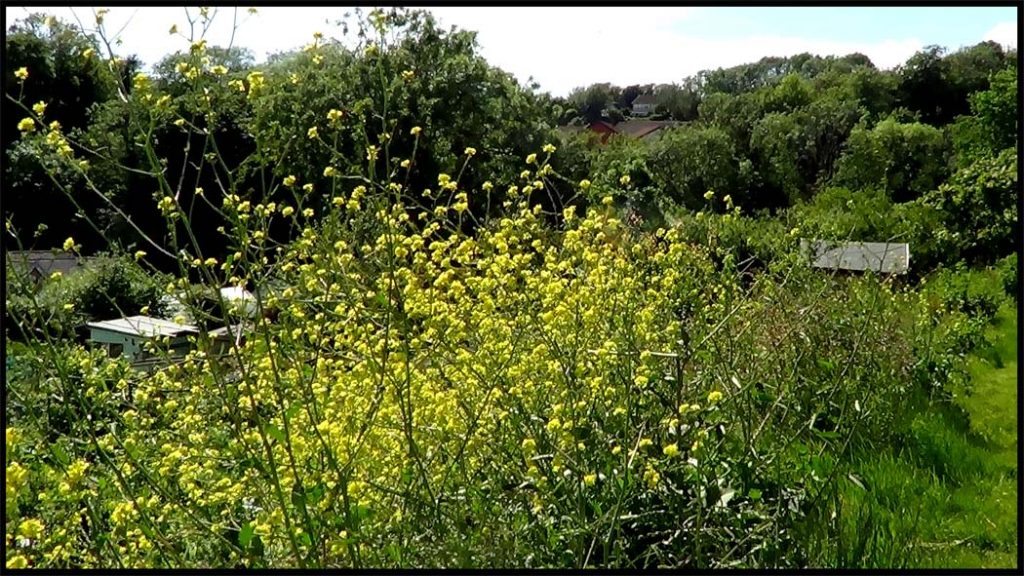
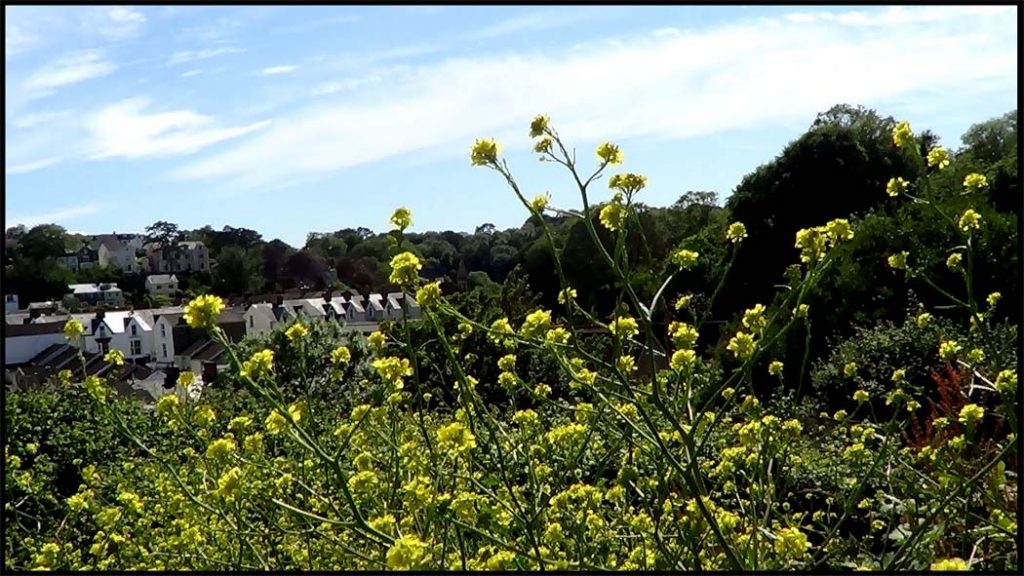
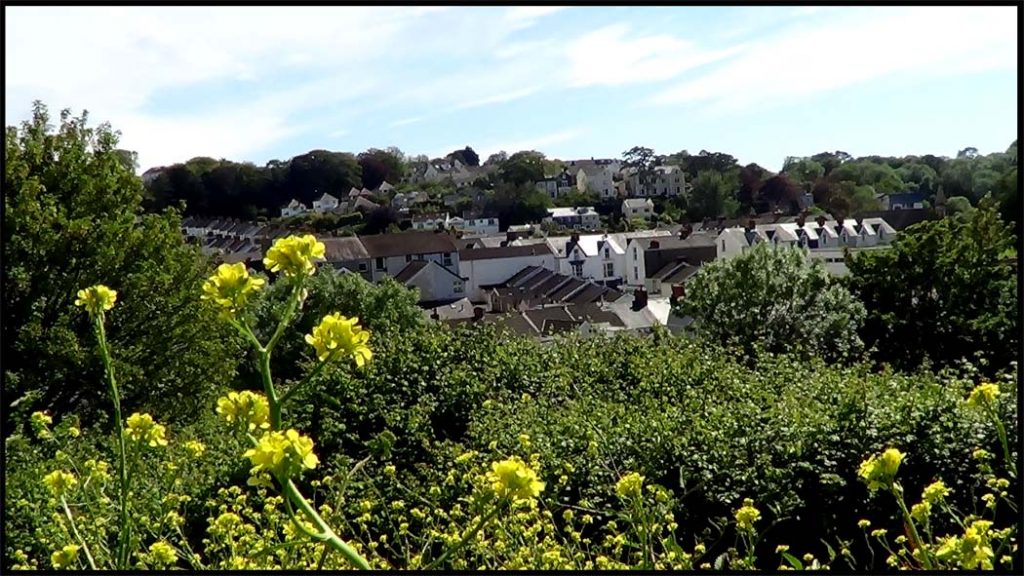
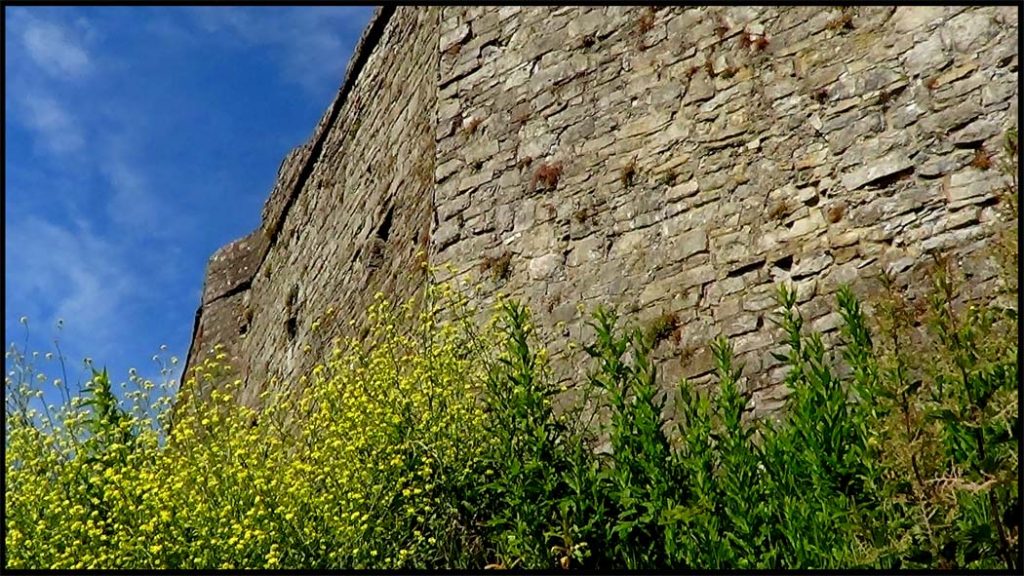
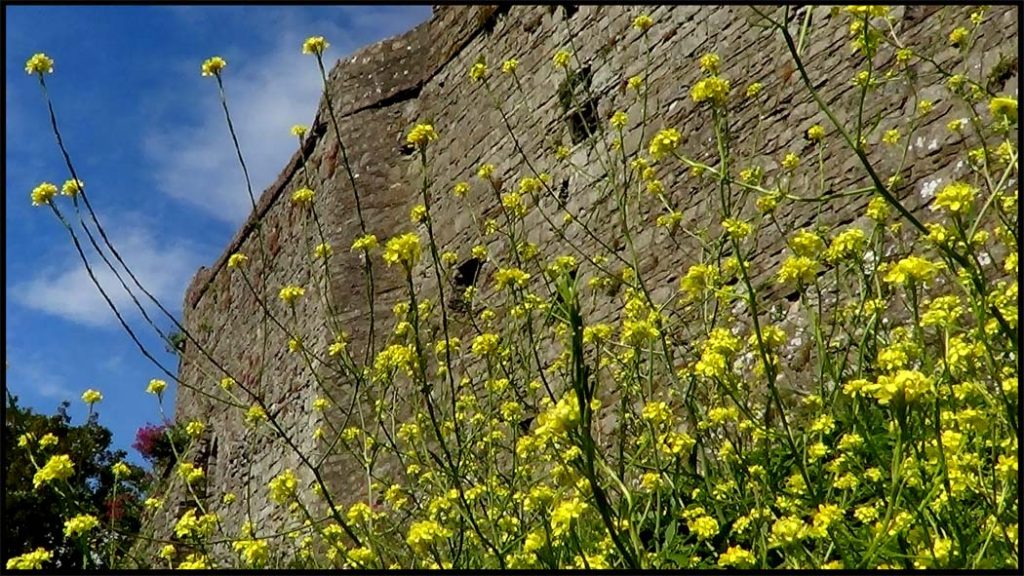
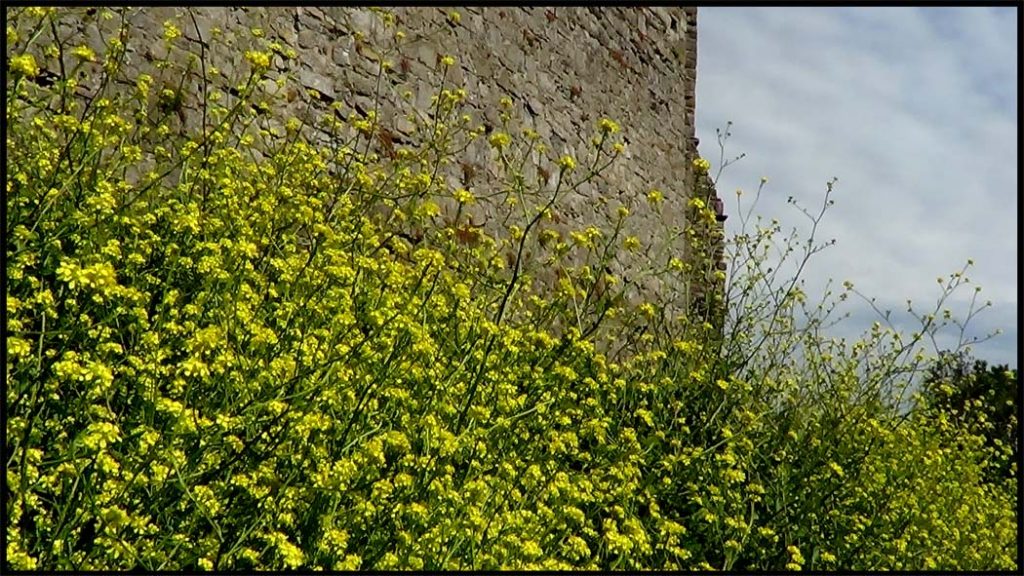
We enjoyed viewing outside of the Castle with beautiful yellow flowers in full bloom near the stone structure of the Castle creating a romantic atmosphere.
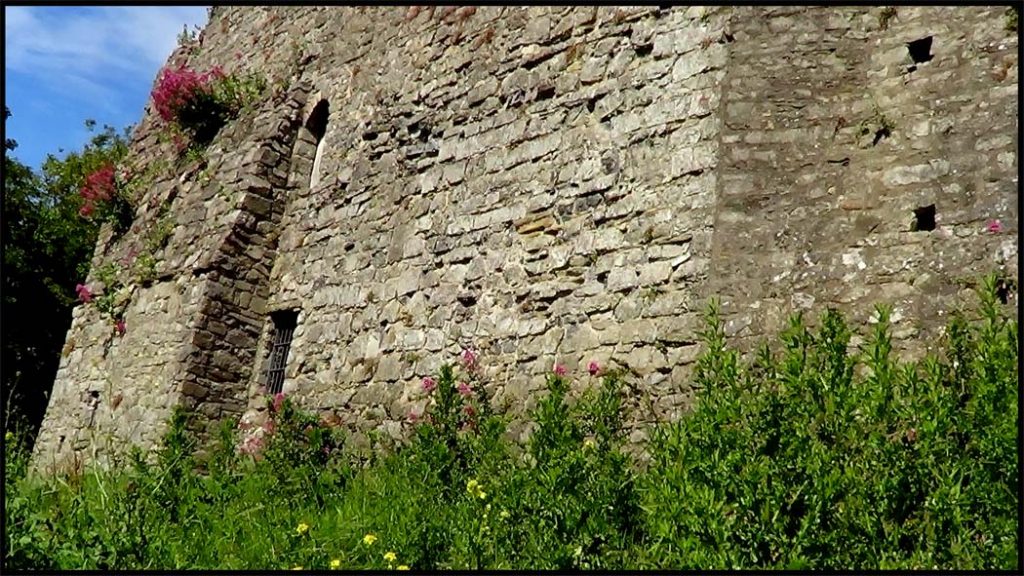
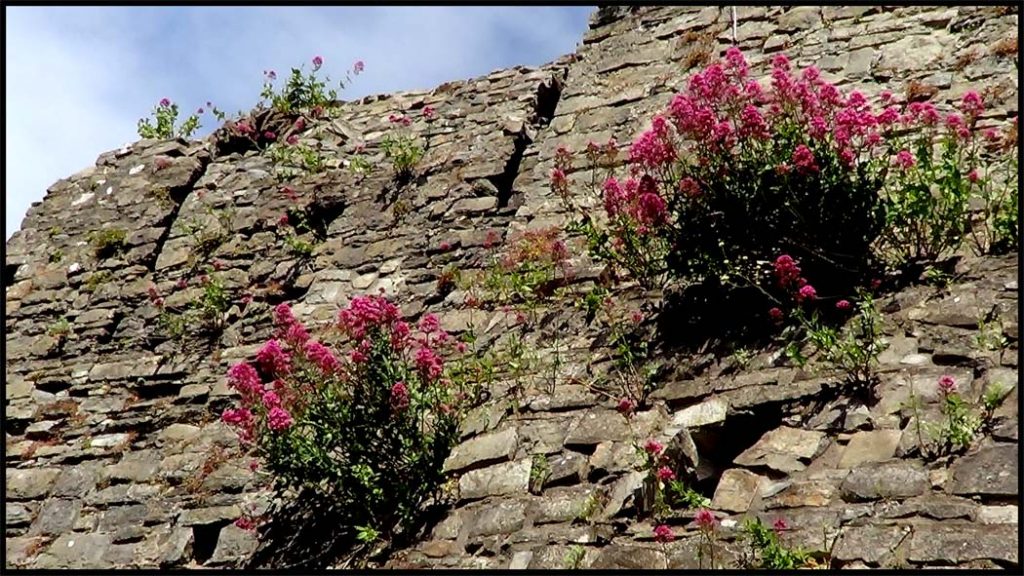
Two bouquets of pink flowers growing out of the wall as if it is an invitation saying “Hello” to the visitors who come to enjoy the Castle. Plants and trees beautify the place and surroundings creating oxygen for us to breath at the same time taking in carbon dioxide giving a healthy environment.
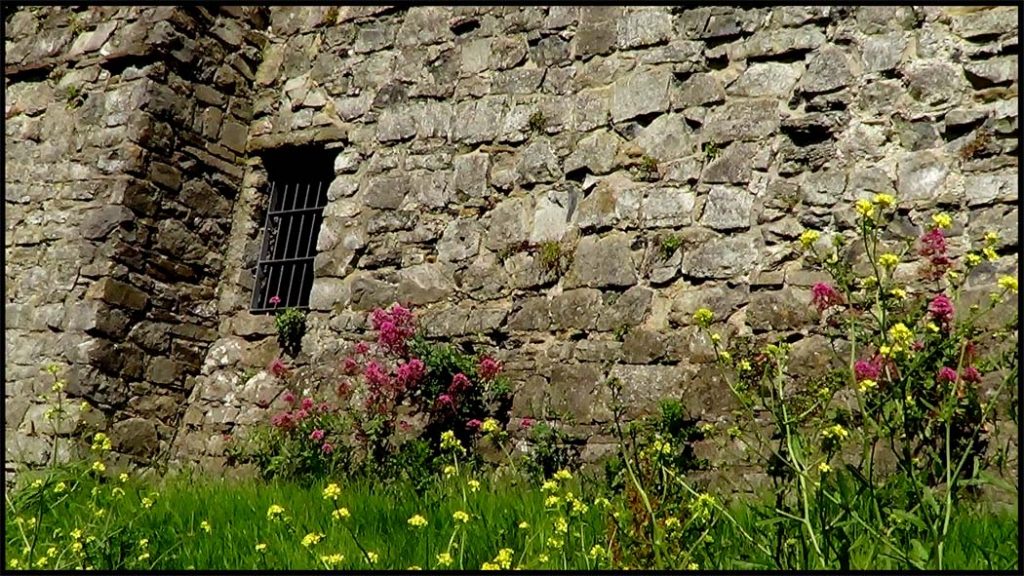
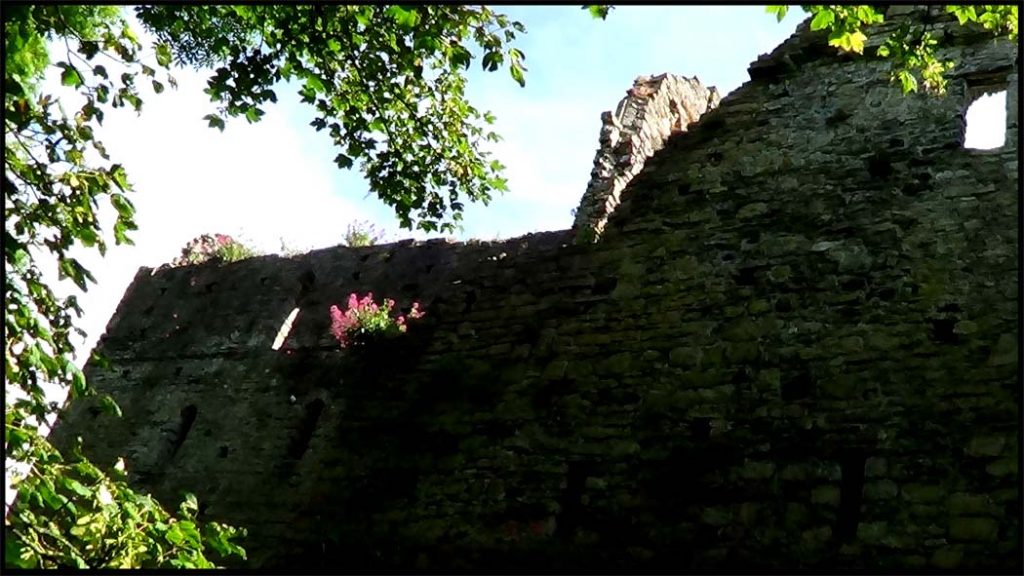

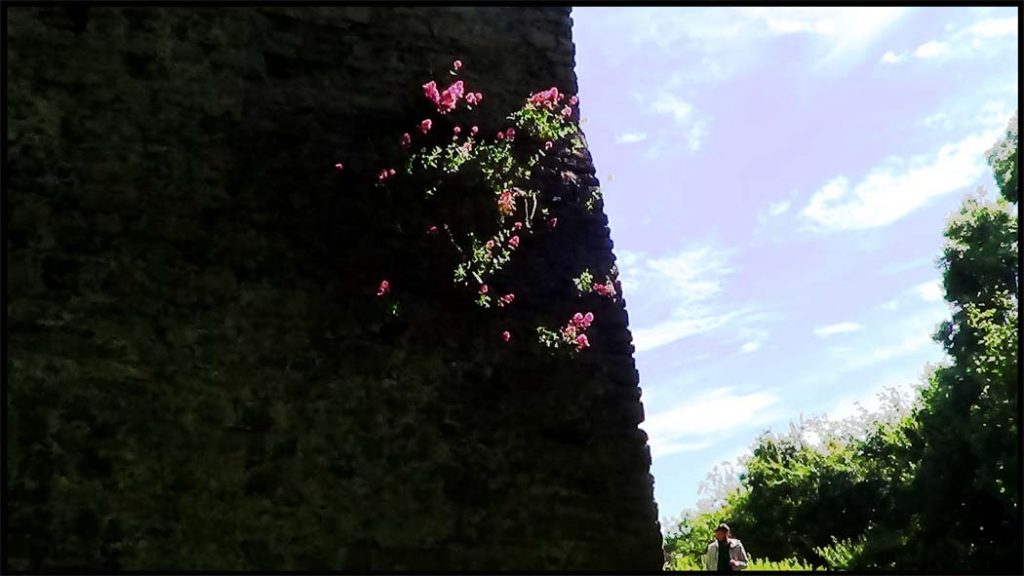
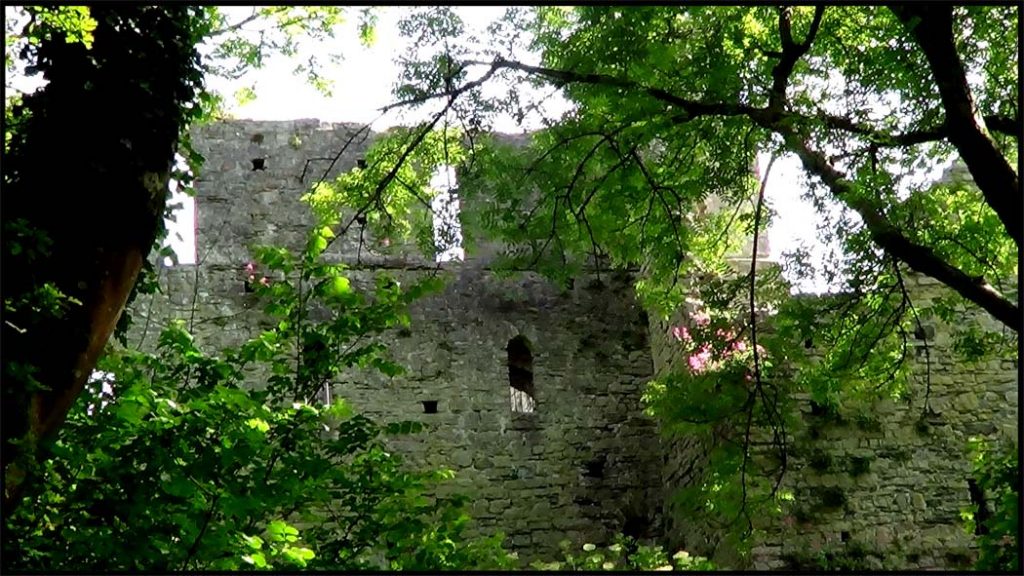

Sunlight shines on the leaves, giving different shades of green and light yellow as if the artist painted them on a canvas.

This is a glimpse of beauty that nature creates, if we take notice, cultivate, and enjoy it in our beautiful world.
Leave a Reply